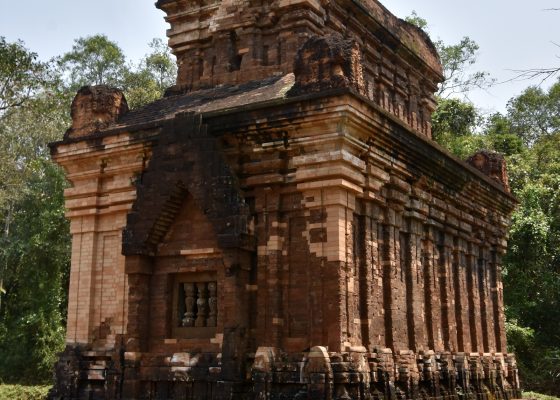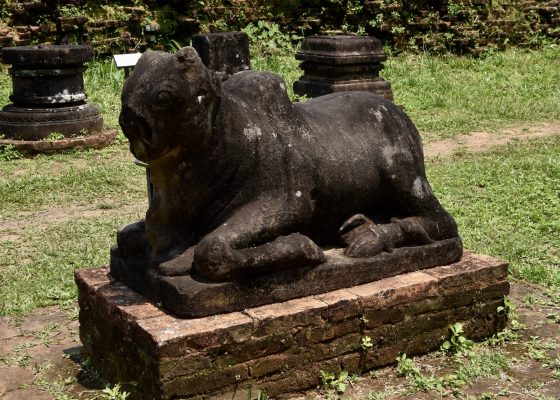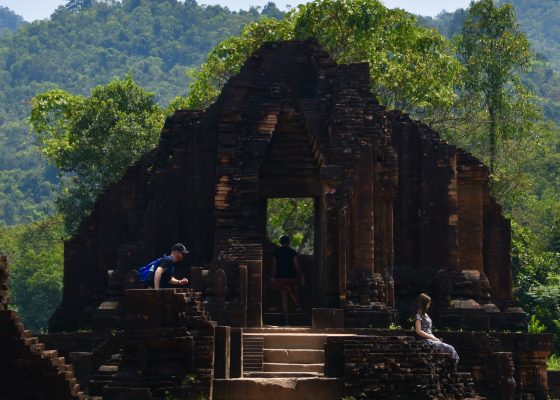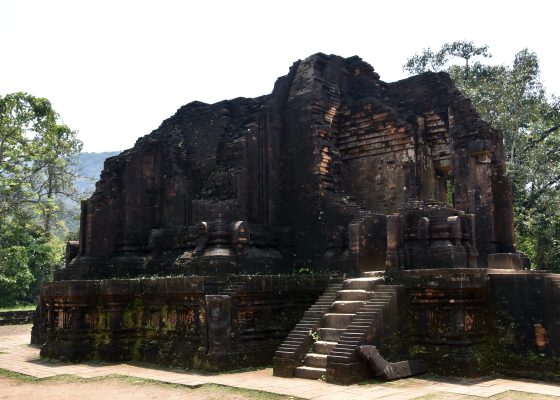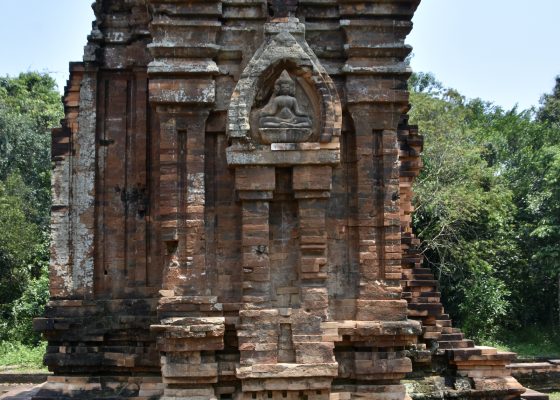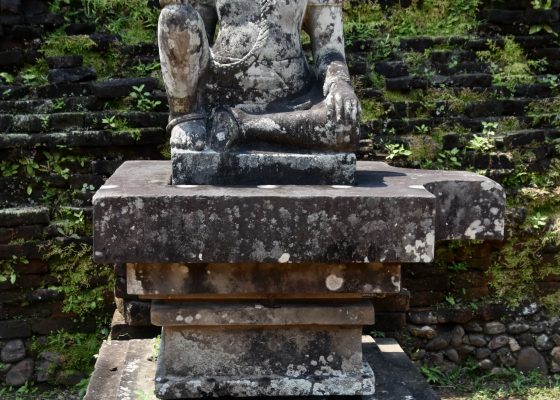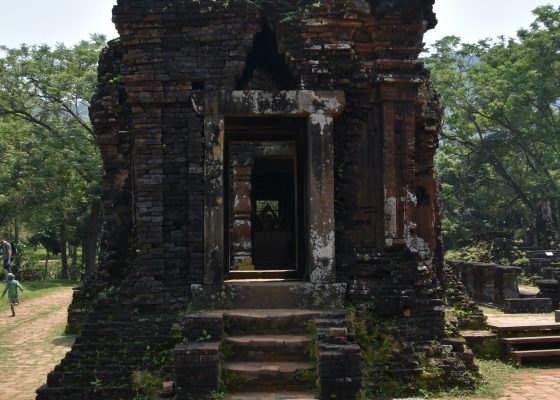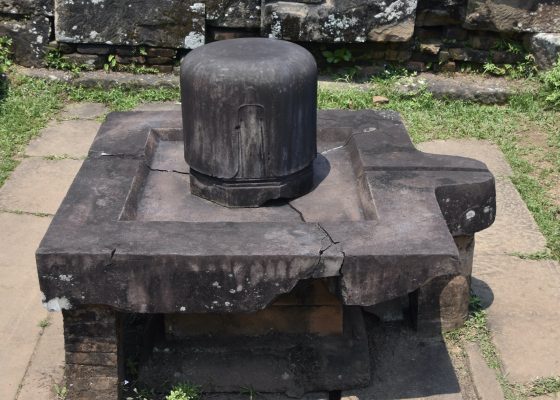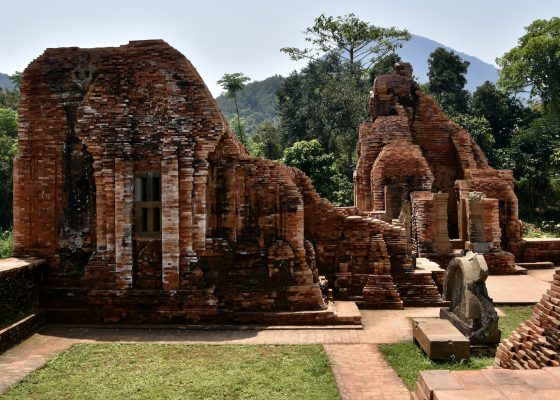My Son – Spiritual Capital of the Champa Empire
In the last post from the Adventures Abroad tour of Vietnam we settled in for a three day stay in the wonderful little city of Hoi An. On the second full day there we left the city to visit the archaeological site of My Son which like Hoi An is also a UNESCO World Heritage Site. Now I have to confess that before coming on this tour I had never heard of the Champa Empire and certainly knew nothing about My Song. In this post I’ll explain why future visitors to Vietnam absolutely must include this amazing site to their itinerary. OK, let’s get started.
History of My Son
In my post on the Cham Museum of Sculpture in Da Nang I gave a brief history of the Champa Empire in south and central Vietnam that lasted from the 2nd to the 19th century and I won’t repeat it here. Suffice it to say that it was a civilization that was heavily influenced by Indian culture and Hinduism up until its conversion to Islam in the latter part of the reign. Hoi An was the commercial hub of the empire while starting in the 4th century My Son became the spiritual centre. For the next thousand years many temple complexes were built here, most dedicated to the worship of Shiva as the supreme god in a sect of Hinduism known as Shaivism. Westerners tend to think of Hinduism and Buddhism as a single religion when in fact, just like Christianity and Islam there are many different forms of both religions. Today there are still over 250 million people who follow this form of Hinduism.
The first temples at My Son were made of wood, but after disastrous fires in the 6th century the Cham people starting using a distinctive red brick and over seventy temple complexes were erected in a valley near the headwaters of the Thu Bon river. Yesterday we had a boat tour near the mouth of this river in Hoi An and passed under a bridge that cost over $100 million to build. Today we will cross the river several times over bridges that are scarcely forty feet long.
With the decline of the Champa Empire, My Son was gradually abandoned and swallowed up by the surrounding jungle, just like the Mayan cities of Mexico and Central America. It was not until 1898 that a Frenchman stumbled upon the site and recognized it for what it was. Restoration efforts began in the 1930’s and continue to this day. However, here’s the really sickening part. During the Vietnam War the Viet Cong used the My Son area as a base and the Americans bombed the shit out of the place and most of the temple complexes were annihilated. What is there today is pretty amazing, but it’s only a fraction of what was once to be seen.
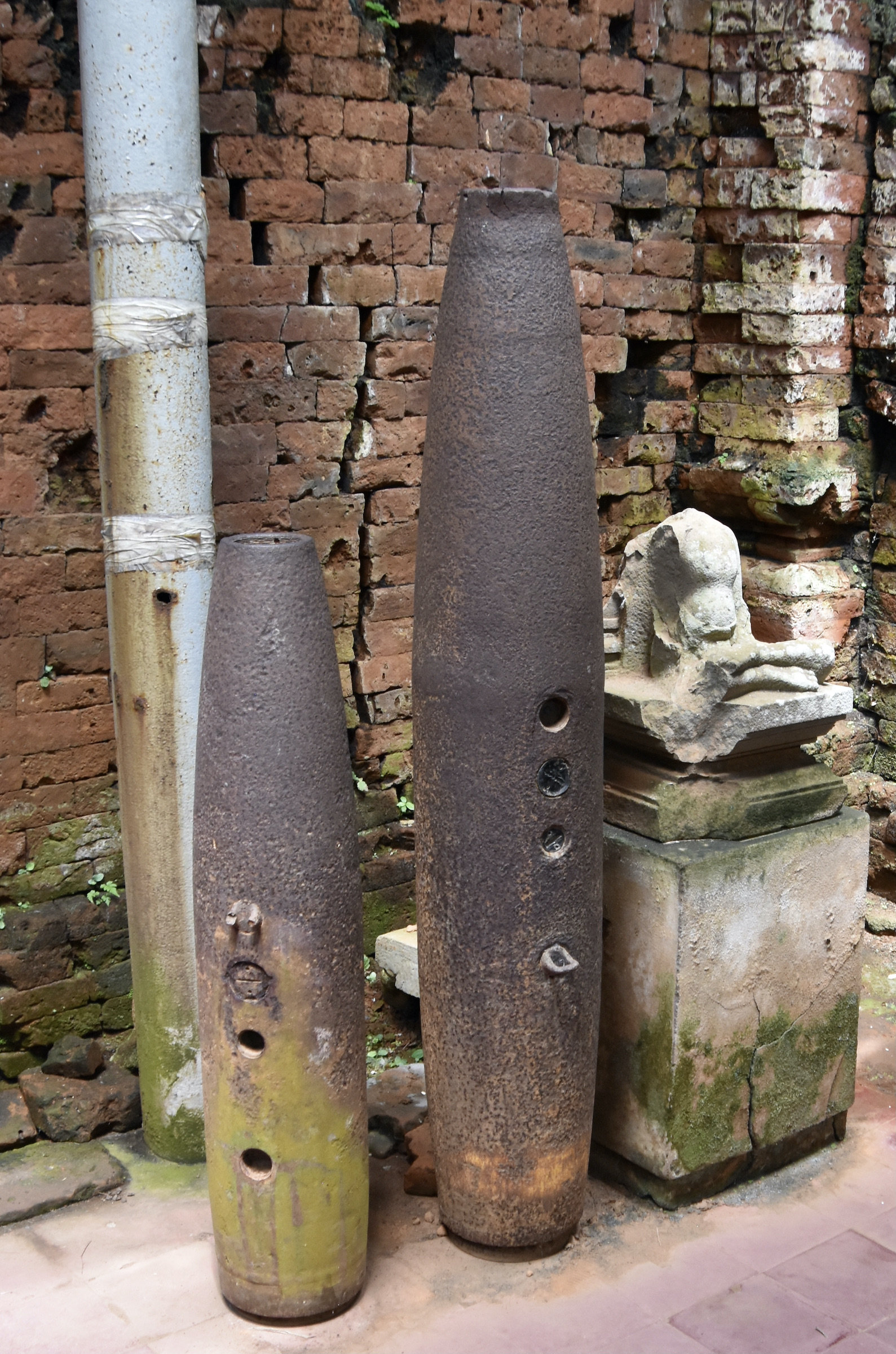
After the Vietnam War, contributions from many different countries and the work of Polish archaeologist Kazimierz Kwiatkowski who was also responsible for helping preserve Hoi An, led to the restoration of many of the temples. In 1999, it was inscribed as a UNESCO World Heritage Site.
My son is 60 kms. (37 miles) from Hoi An and it takes us about an hour to get there. The site itself is a fair distance from the parking lot so you have to take a shuttle bus to the entrance.
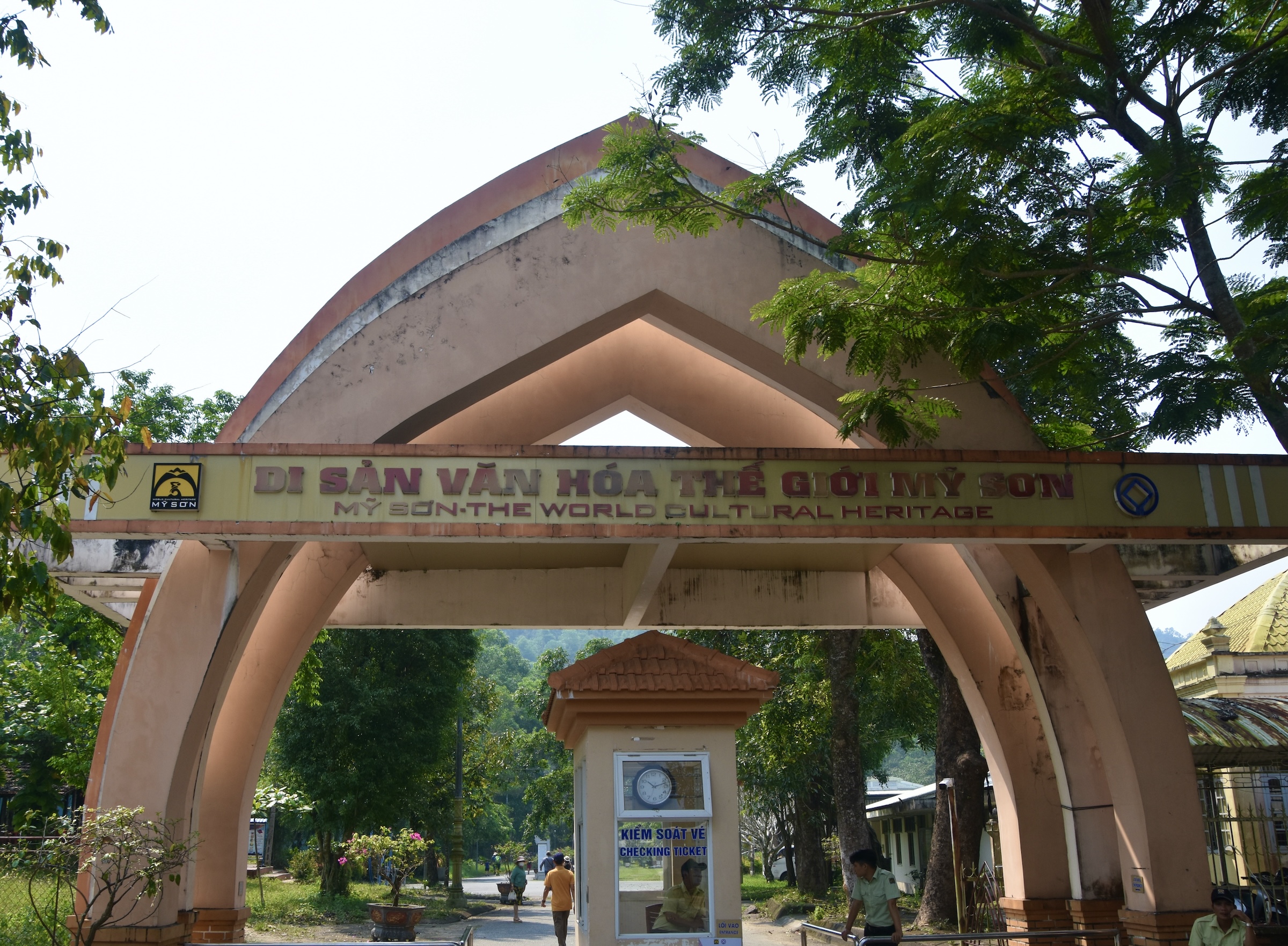
There is still another fairly long walk to get to the temple complexes.
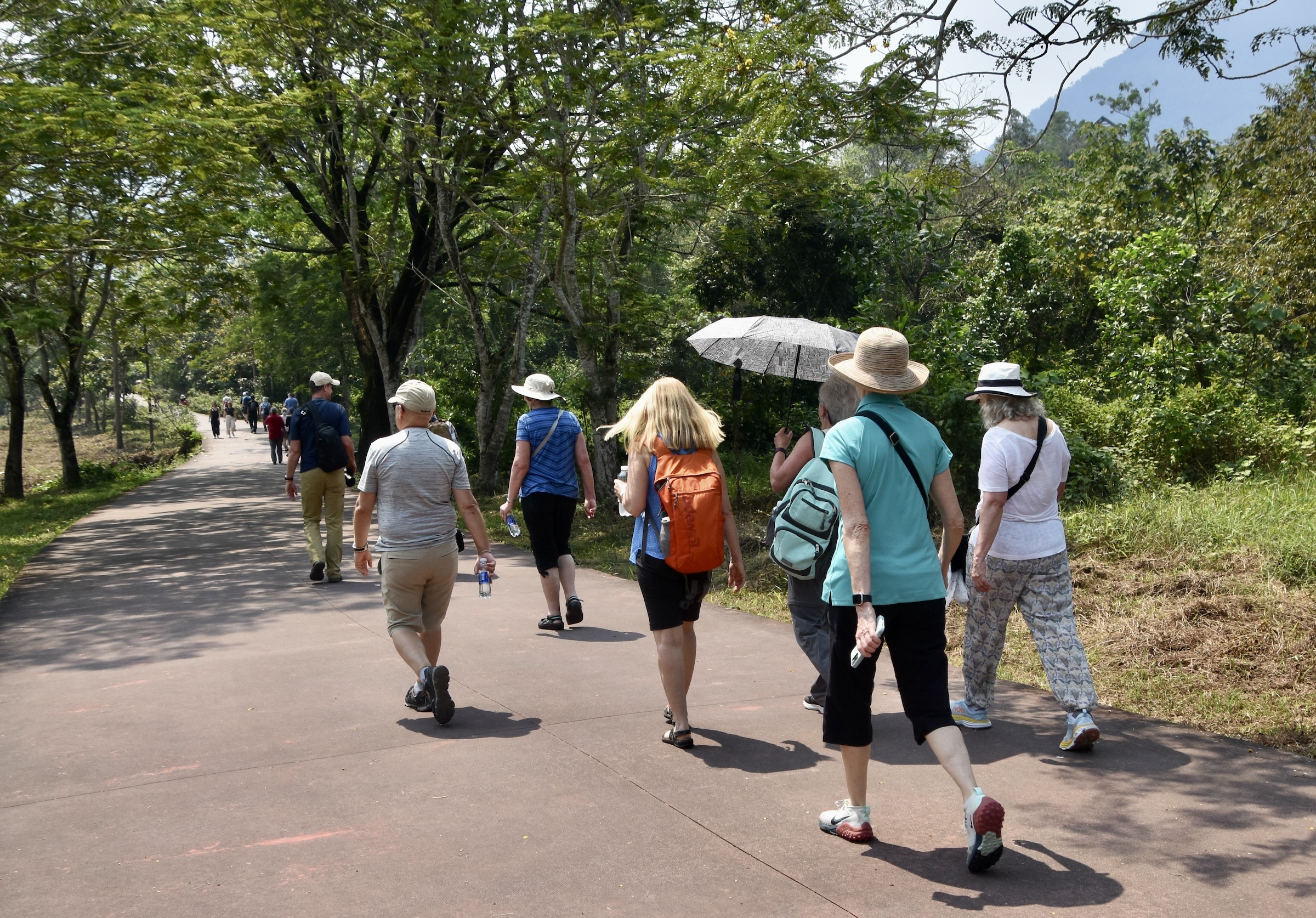
Here is a map of the layout of My Son with each of the complexes identified simply by a letter, from A to L. There are pathways that lead from one to another and will take you around the complex in a roughly counter clockwise direction starting with B,C and D. As you can see the Thu Bon river winds its way through My Son in an irregular pattern that means you cross it about five or six times during the visit.
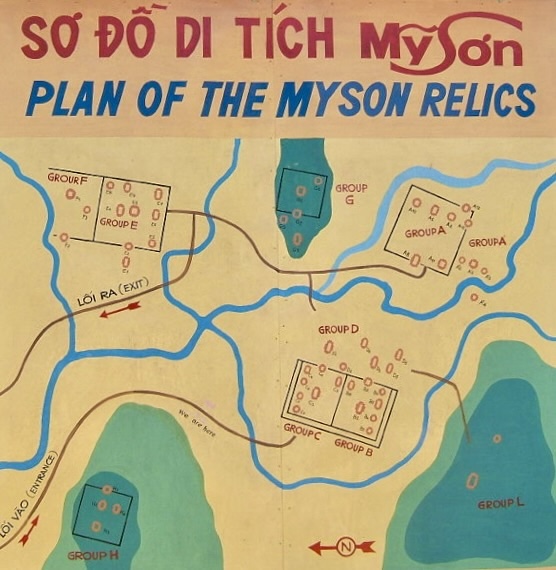
For some reason, apropos of nothing, they want visitors to sit through a performance of women dancing with pots on their heads before going to the site proper. The result will be that when it’s over, everyone will descend on My Son in one big surge. Simon and I say to heck with that and head out halfway through the performance with the result of having the place mostly to ourselves.
Since I didn’t know about My Son before embarking on this tour I did not have any expectations, but I sure wasn’t expecting a precursor to our visit to Angkor Wat which is coming up after Vietnam. These are the main two temples in groups B and C which are within a small walled enclosure. The building on the right, B1 is the only one at My Son that is made of stone and dates from the 11th century. All the rest are made of a special type of brick that was only made by the Cham people and to this day no one has figured out how they were made and what type mortar was used to make them stick together. They are far stronger and more water resistant than modern bricks.
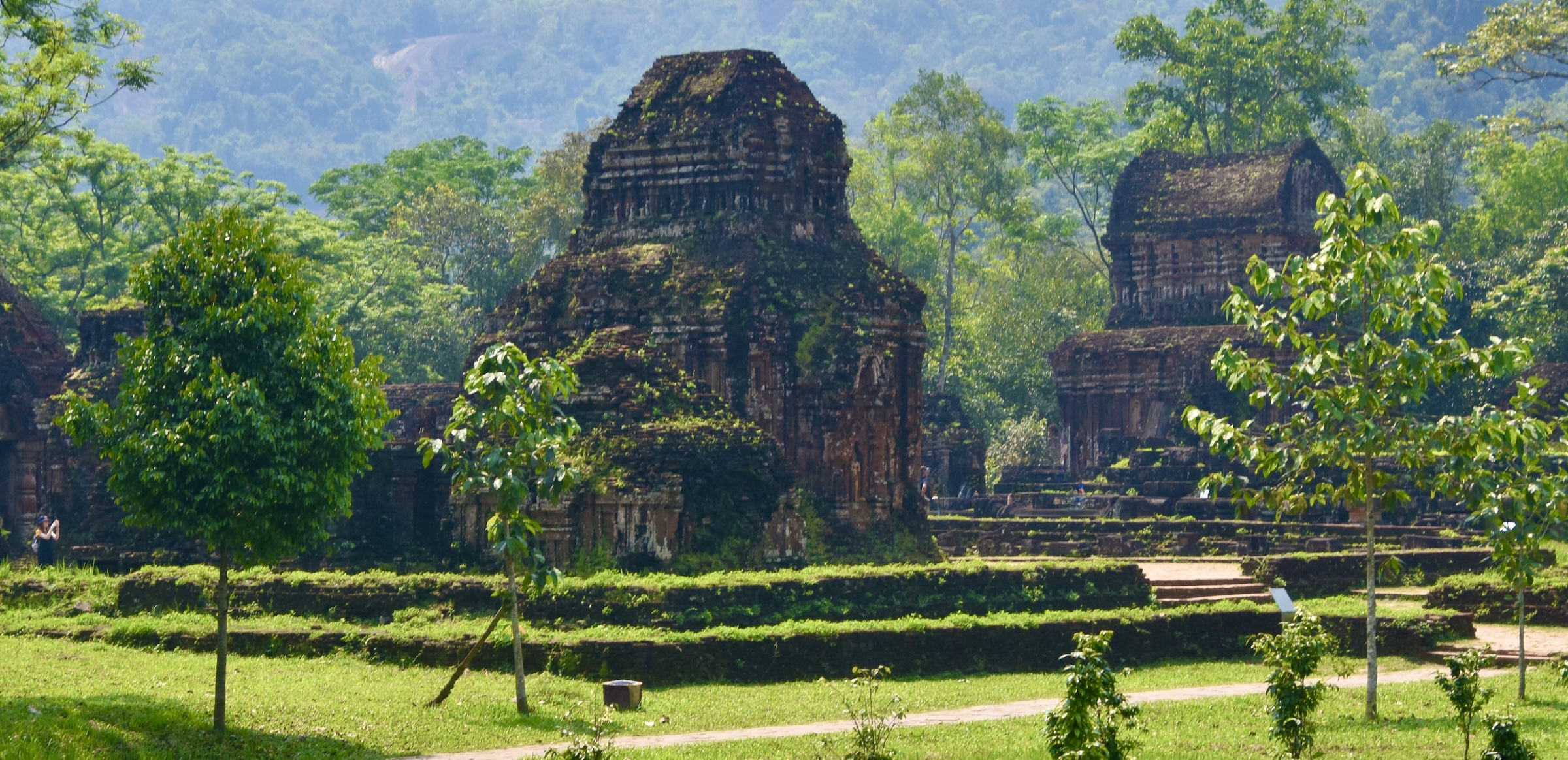
Moving on to Group A you come to these two temples which are being restored by Indian archaeologists.
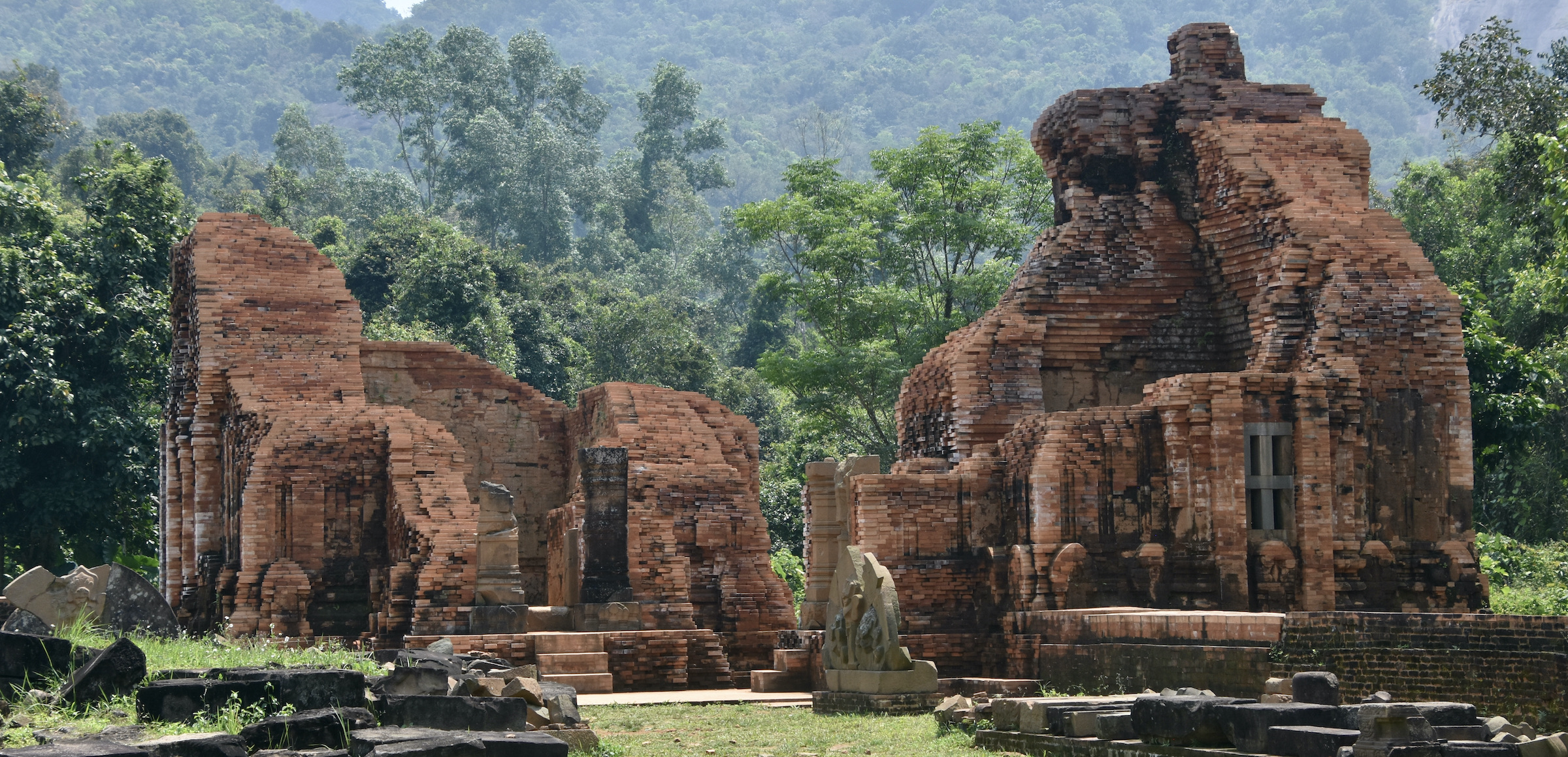
These are drawings by French archaeologist Henri Parmentier of these same two temples as they were in the late 1800’s and up until the Americans destroyed them in the Vietnam War. If they can rebuild Notre Dame, hopefully one day these two temples can be restored, but that’s probably a pipe dream.
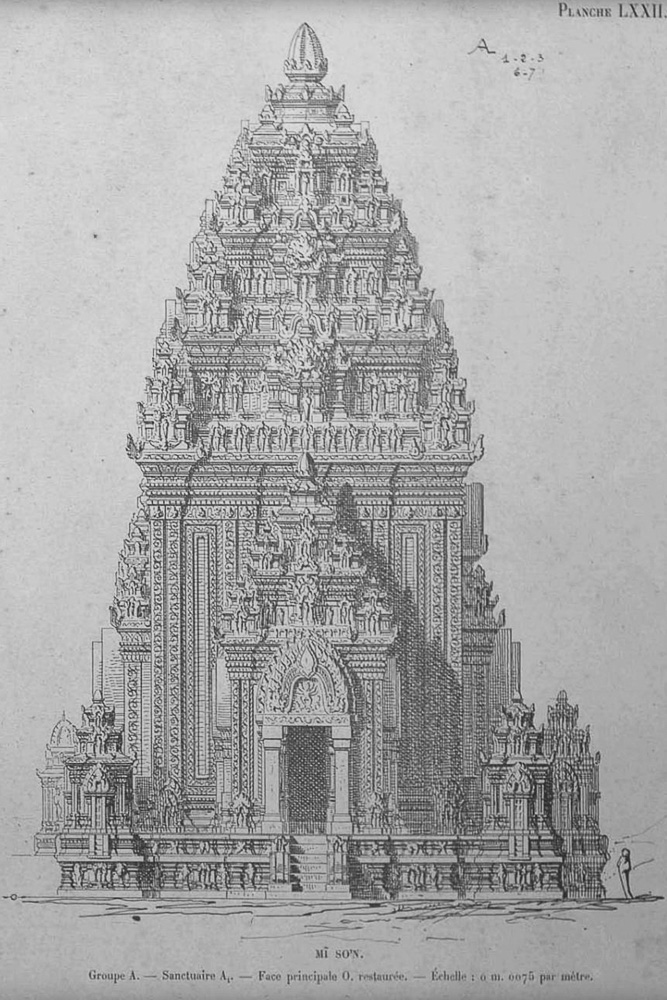
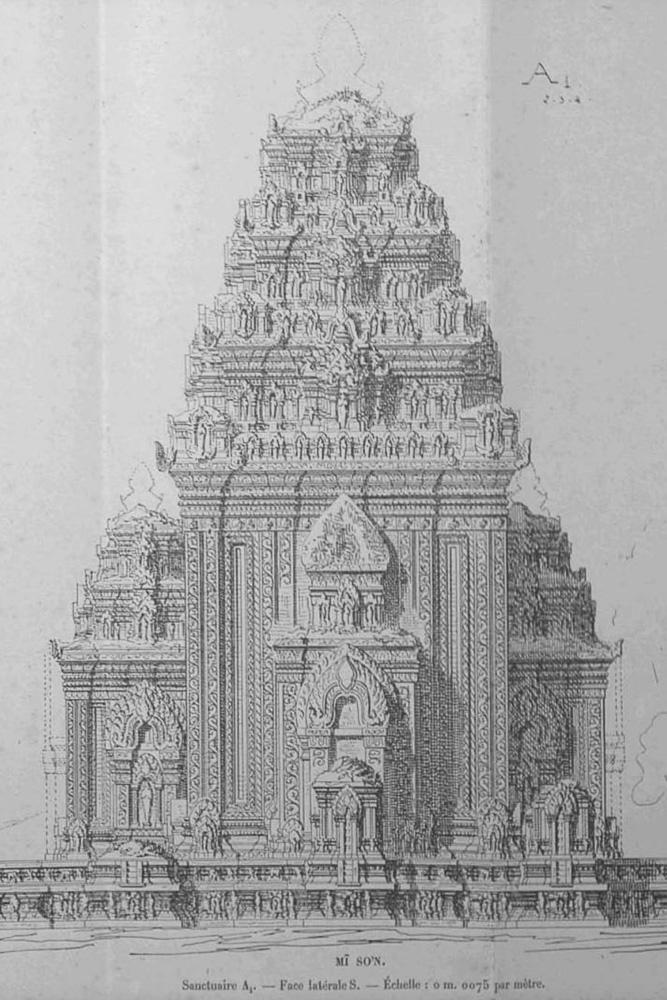
The temples were adorned with friezes that have been inserted into the brickwork and this is one of the few still remaining.

The temples were repositories for sacred objects some of which we viewed at the Cham Museum in Da Nang. This is a tympanum depicting Shiva which would originally have been above the entrance to one of the temples.
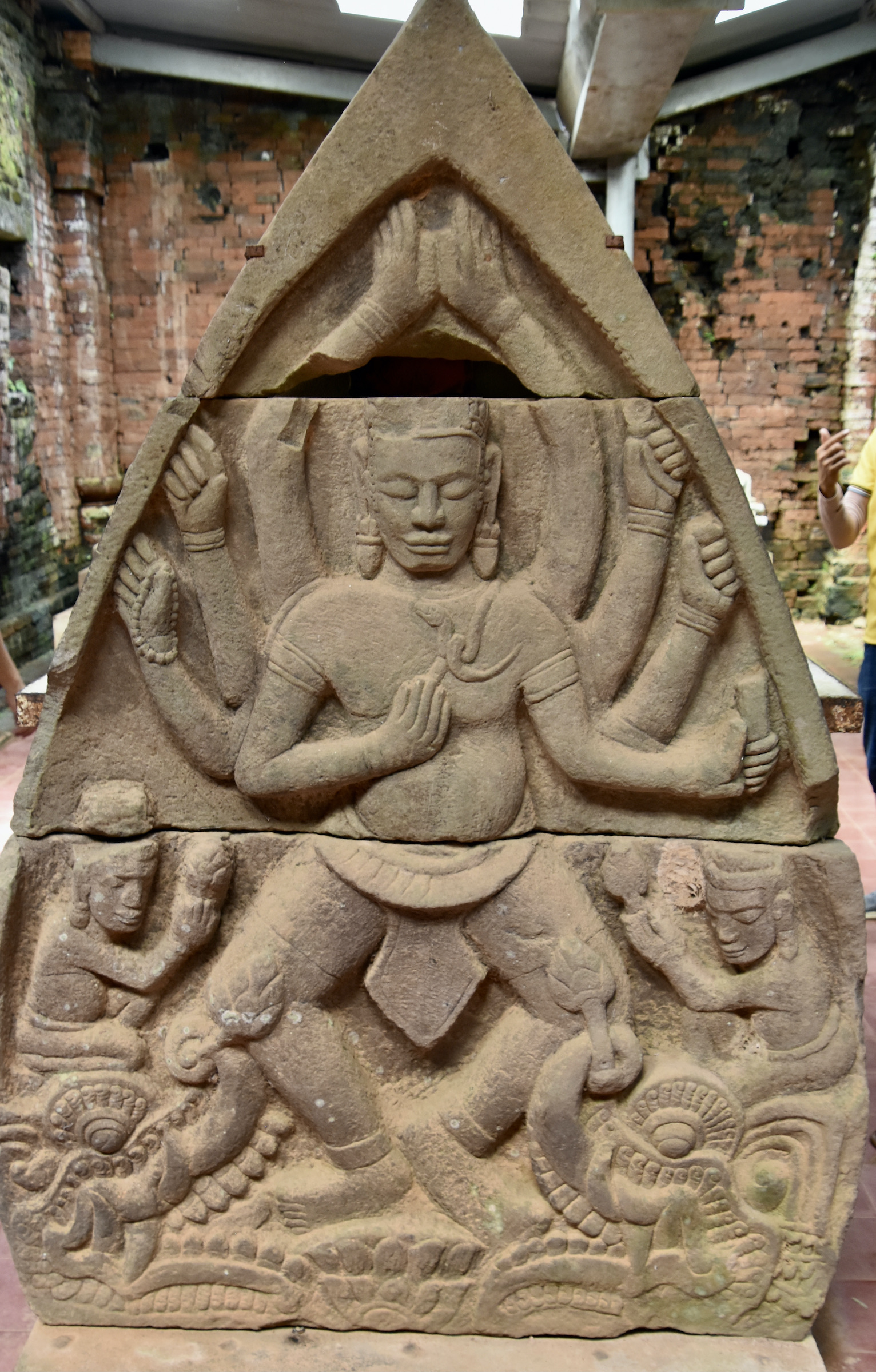
Here is another depicting a pantheon of Hindu gods with Shiva in the middle.
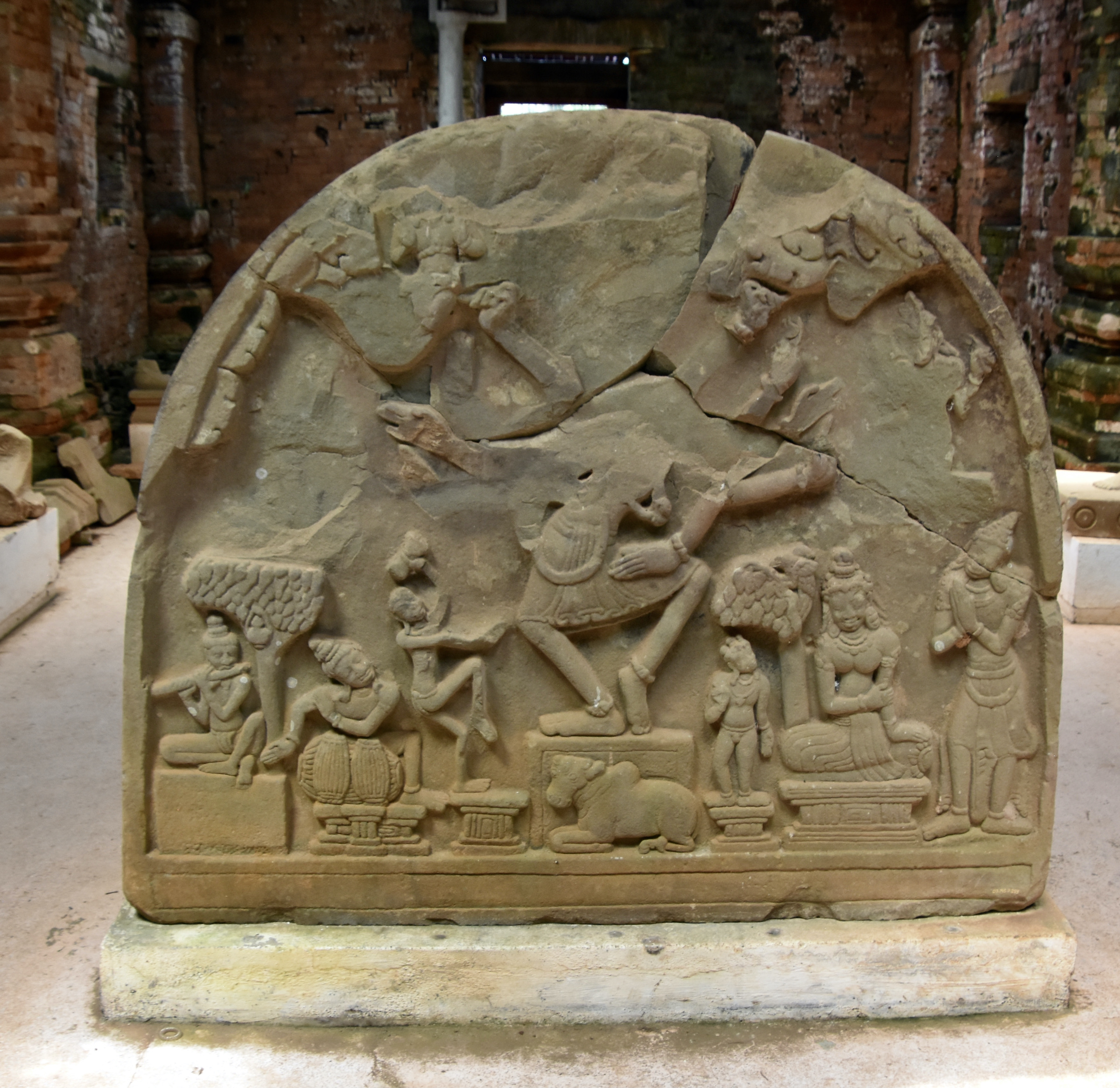
There is one tympanum still in place over Temple B5 depicting two elephants.
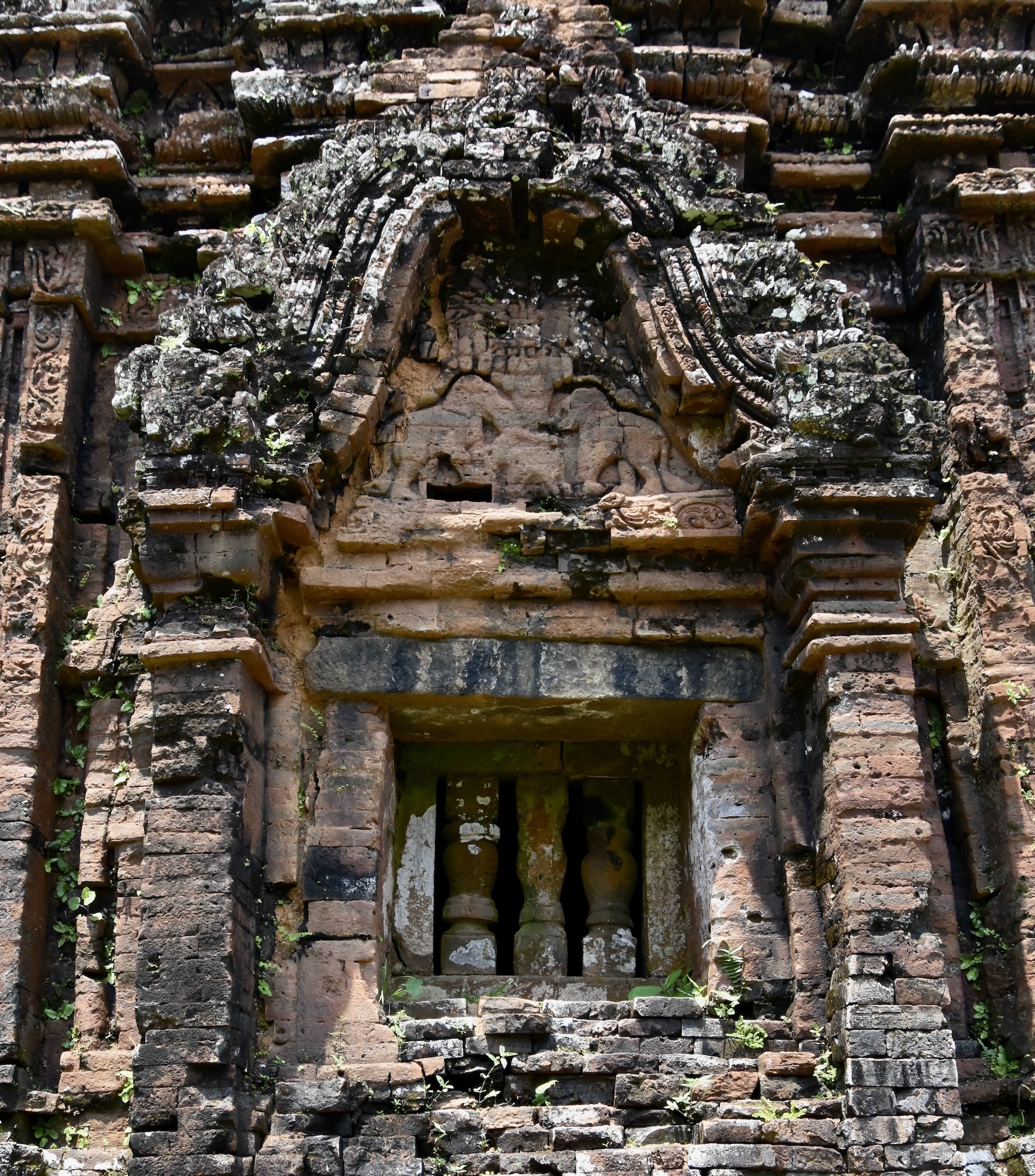
This post would be too long if I were to provide more detail on each and every group at My Son. Instead I will end with this gallery of images. Double click to open one and double click again to enlarge. For a more detailed account of My Son I recommend this post from Vietnamese bloggers Long and Sophie on their site Delightful Travel Notes.
- Temple E 7
- Nandin
- Group G Temple
- Group G Side View
- Group K Temple
- Headless Figure
- Temple B5
- Pedestal
- Group A Side View
In the next post we’ll visit the former royal city of Hue and explore Vietnam’s version of the Forbidden City. Hope to see you there.


